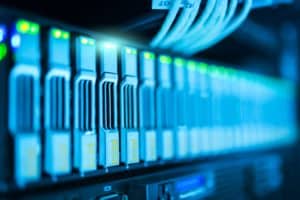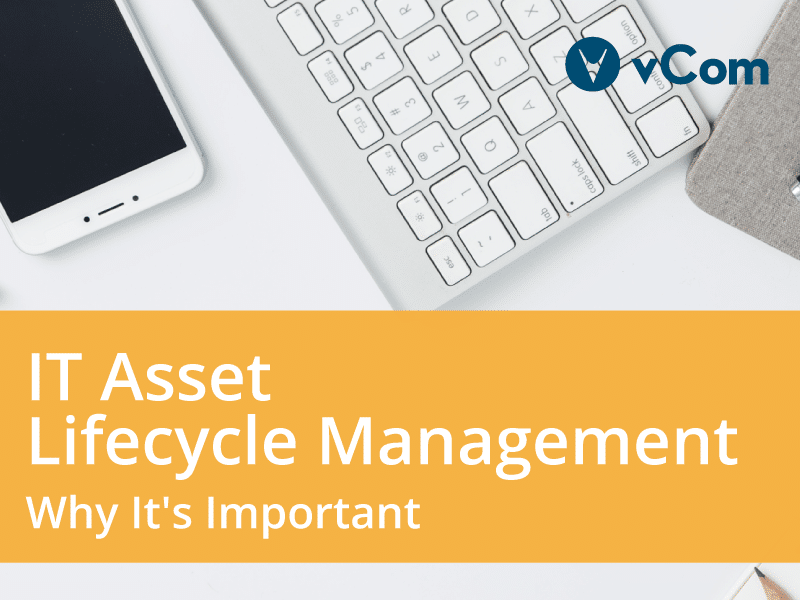IT assets take many forms: laptops, routers, monitors, and other physical equipment. Assets are also non-physical, like software, cloud subscriptions, etc. As the world becomes more technical, it’s becoming nearly impossible for modern businesses to operate without an IT infrastructure. The issues many companies face is not having a solid grasp of what assets they actually have, much less what the best practices are for managing them.
What Is IT Asset Lifecycle Management?
Before illustrating why IT asset lifecycle management (ITALM) is essential, you need first to understand what it is. Unfortunately, for every expert you may query on the matter, you’ll get equally as many answers. (Basically, the definition of ITALM and its role in the business process differs from one company to the next.) One common descriptor would be gleaning the most value out of each IT asset. This statement isn’t wrong per se, but it doesn’t accurately describe why ITALM is significant and what it encompasses.
Another explanation commonly offered is that ITALM is keeping an accurate inventory of your IT assets. Indeed, that’s part of a good ITALM strategy, but it isn’t close to being a full description.
We think ITALM is an inclusive, end-to-end strategy for tracking and maintaining all IT assets, both hardware and software, and includes the following components:
- Maintaining a comprehensive inventory
- Verifying that all assets are up to date with all patches and upgrades
- Ensuring that all assets within your infrastructure are secure, appropriately configured, and optimized
This process is continuous, not completed and forgotten, and requires IT administrators to constantly evaluate the process and the assets themselves to provide peak efficiency and financial efficacy.
A strategy must also be in place to upgrade or replace aging hardware and outdated software platforms when a purchase decision occurs, not when the asset becomes obsolete. ITALM, when done correctly, is work-intensive, which is why many organizations don’t have an effective ITALM strategy. However, the importance of ITALM is not to be underestimated and will pay dividends in the long run, both financially and operationally.
IT Asset Examples

Hardware that runs the infrastructure is the first of these types and is the most obvious. Infrastructure hardware includes routers, switches, servers, data storage centers, and the like. Another type would be any software developed internally. IT assets do not only refer to procurements made from a third-party vendor but instead include anything developed by your team. Any software purchased externally requires licensure to be used, and that license involves assets separate from the software itself. Any infrastructure equipment leased also counts as an asset, much as software licenses do.
Computers and other hardware devices on the IT infrastructure are assets; however, employee-owned devices that use the infrastructure are not IT assets. The final element that is generally considered an IT asset is digital data. Businesses of all shapes and sizes typically generate and use enormous amounts of data from many sources. Data is treated like any other asset in that it must be managed and maintained for the entire lifecycle.
IT Asset Lifecycle Management Stages
Nearly every IT asset has a limited lifecycle from data to hardware, and IT asset management lifecycle strategies typically break it down into five stages. The first is planning what assets are needed and where and how they will be procured, funded, and used. Next comes the actual acquisition of the asset, whether it’s developing or building, leasing, licensing, or buying. After acquiring the asset, businesses need to integrate it effectively into the existing infrastructure.
Once integrated into the infrastructure, assets need to be maintained, whether it involves repairs to hardware or upgrades and updates to the software. The final stage is retirement, which occurs when the asset’s value no longer warrants the cost of its upkeep, and a replacement must be planned for, starting the cycle over again.
Six Reasons Why ITALM Is Important
The following six factors best illustrate why ITALM is vital to your organization:
- If you do not properly manage your assets, they can be vulnerable to cyberattacks. Failing to maintain an updated infrastructure, both hardware and software, can lead to hackers gaining access through network weaknesses you may not realize.
- Outdated assets can slow workflow and negatively impact productivity. In turn, obsolete hardware can slow down critical operations, while challenging-to-use obsolete software can hamper productivity.
- A network infrastructure that is both reliable and stable requires redundancy in case any component goes down. A complete ITALM process will provide a comprehensive map of every element on the network, allowing you to see any asset with a single point of failure. Any part of the network can go down if one asset fails. Finding these items and adding redundancy keeps your business operations up and running.
- No matter what business or industry you’re in, you will most likely need to comply with regulatory agencies. If you do not have a solid ITALM process, it can be all but impossible to know whether all assets comply with the various regulations.
- The IT asset lifecycle is relatively short. When you couple that reality with the multitude of assets you most likely have, you’ll face a near-constant influx of new assets that you need to manage appropriately. If you fail to keep updated records, your infrastructure map will be inaccurate, leading to wasted time finding missing assets or lax security protocols.
- Dispose of your retiring assets properly. This task applies to the proper disposal of hardware components and sensitive information stored on these components. You must eliminate any sensitive information from any hardware asset you’re retiring.
When evaluating IT services, you can learn how vCom Solutions can help you manage your business IT needs effectively by contacting us online or calling 800-804-VCOM (8266). We will be happy to discuss our services with you and describe how we can help your organization with its IT asset lifecycle management processes.


